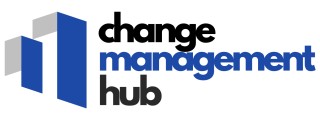
Understanding Ageism: A Barrier to Change
Age: An Often Overlooked Factor in Organizational Change
Understanding how ageism can act as a barrier within the workplace is crucial for effective change management. Age discrimination, while subtle, can significantly impede organizational progress, often sidelining older employees in favor of younger workers. This bias emerges in various forms, including hiring preferences, promotion opportunities, and even in the daily interactions among colleagues. Many assume that younger employees are more adaptable or tech-savvy, leading to misguided assumptions about older workers. This age bias can deprive the organization of diverse perspectives and experiences that older employees bring to the table. Such discrimination can be subtle, manifesting as age-based jokes or more serious issues like mandatory retirement policies. Addressing ageism directly in the workplace is necessary for all employers to ensure a conducive work environment. Legal frameworks like the Age Discrimination in Employment Act (ADEA) are in place to prevent age-based discrimination, yet the signs of ageism often persist, requiring companies to take proactive measures. For those managing change, recognizing ageism as a barrier to effective change initiatives can lead to more comprehensive strategies that include the perspectives and skills of all employees, regardless of age. To empower your team, you can explore how to best engage stakeholders effectively during transformative processes. This inclusion will foster an equitable environment, paving the way for successful and sustainable change.Common Examples of Ageism in the Workplace
Ageism Manifestations in the Workforce
Ageism in the workplace takes on many forms and can be subtle, yet its presence is undeniable. Recognizing these manifestations is the first step in combating this pervasive issue and ensuring a more inclusive environment for all employees, regardless of age. Here are some common examples of how age discrimination can surface in employment settings:
- Job Advertisements: Often, job postings subtly discourage older workers by using phrases like "energetic" or "digital native," appealing to younger candidates, thus perpetuating age bias.
- Promotion Trends: Discrimination based on age can lead to younger employees being favored for promotions over equally skilled older workers, limiting opportunities for advancement.
- Training and Development: Employers may overlook older employees when providing new training opportunities, assuming their disinterest or inability to adapt to new technologies and work environments.
- Stereotypes and Assumptions: Presumptions about older workers being resistant to change or less innovative can affect their involvement in new projects, sidelining their contributions.
- Retirement Expectations: Mandatory retirement ages or pressuring older employees to retire early can be a form of age-based discrimination, violating employment law frameworks like the ADEA.
Addressing these issues is critical for change management success. Organizations must ensure that legal and non-discriminatory practices are followed, assisting both younger and older employees in thriving within their roles. By combating ageism, employers not only adhere to employment law but also foster a more inclusive and dynamic work environment. For those seeking comprehensive strategies to address these challenges, exploring effective strategies for representative management in change initiatives is a valuable resource.
The Impact of Ageism on Change Management
The Consequences of Ageism on Adapting to Change
Ageism in the workplace has a profound impact on change management initiatives. When older employees face discrimination, they may be excluded from participating in key projects or decision-making, leading to a lack of diverse perspectives. This not only hinders innovation but also stymies the organization's ability to adapt to new challenges effectively. In workplaces where age biases are prevalent, older workers may be unfairly perceived as resistant to change, which is often a stereotype rather than reality. This assumption can undermine their contributions and discourage them from engaging with new technologies or methodologies. Consequently, the organization misses out on leveraging the valuable experience of seasoned employees who could otherwise facilitate smoother transitions during periods of change. Moreover, age discrimination can create a toxic work environment that affects morale across all age groups. Younger employees witnessing ageism might feel insecure about their own long-term futures at the company, while older workers may experience diminished opportunities for advancement. Such a climate risks deteriorating employee engagement and retention, which are critical to sustaining a motivated workforce. Additionally, legal implications around age discrimination, highlighted by laws such as the Age Discrimination in Employment Act (ADEA), stress the importance of maintaining equality. Employers need to be acutely aware of the consequences stemming from ageist practices. This awareness extends to understanding how age bias affects their change management efforts, ensuring opportunities are open to all employees regardless of age. For businesses striving for optimal change management, actively addressing age bias involves implementing strategies like mandatory retirement reviews and developing a culture that values every employee's contributions regardless of age. Encouraging a mix of younger and older workers in the conversation is key. Exploring these strategies further can enhance an organization's capacity to adapt to the ever-evolving business landscape. To dive deeper into strategies for retaining a diverse workforce during periods of change, consider exploring these techniques for retaining top talent.Strategies to Combat Ageism
Implementing Tactics to Overcome Age Discrimination
Creating a more equitable work environment involves a conscious effort from employers and workers to address age bias. It's essential to ensure that employees of all ages have equal opportunities based on their skills and merit. Here are some effective strategies to combat ageism in the workplace:- Promote Awareness and Education: Education is vital in recognizing the signs of age discrimination. Providing regular training sessions can help employees understand the impact of ageism and how age-related stereotypes can affect job performance. Enlightening younger workers and older employees alike fosters a more inclusive environment.
- Review Employment Practices: Employers must examine their hiring, promotion, and retention policies through the lens of age discrimination. For instance, scrutinizing job descriptions for language that might inadvertently exclude older workers can be effective. Similarly, ensuring equal opportunities for career advancement helps counter ageism.
- Encourage Diverse Teams: Diverse teams that include multiple age groups can lead to improved productivity and innovation. Employers should actively seek to create mixed-age teams, enhancing collaboration and understanding between younger and older employees.
- Implement Flexible Work Policies: Older workers can greatly benefit from flexible working arrangements. Employers should consider part-time options or telecommuting, which can accommodate the needs of employees who may wish to extend their employment beyond traditional retirement ages.
- Leverage Mentorship Programs: Introducing mentorship programs where older employees partner with younger employees can promote knowledge exchange and break down stereotypes. It enables younger workers to learn from the experience of their older counterparts and vice versa.
- Address Mandatory Retirement Practices: Re-examining mandatory retirement policies can prevent companies from losing valuable talent simply based on age. Adapting to legal standards, such as those set by the Age Discrimination in Employment Act (ADEA), ensures that employment decisions adhere to the appropriate regulation.
Promoting an Inclusive Culture
Fostering a Welcoming Work Environment
Creating an age-inclusive culture in the workplace is essential to combating ageism. It begins with recognizing the diversity of experiences and skills that both younger and older employees bring to the table. Encouraging this blend of age diversity not only enriches the work environment but also drives innovation and productivity by allowing different perspectives to intersect. Organizations can promote inclusivity by implementing policies that prohibit age discrimination and foster equal opportunities for all employees, regardless of age. This involves training for managers and workers on the detrimental effects of age bias and discrimination in employment, which can manifest in various forms such as biased hiring practices or unfair promotion processes. An important step is to ensure that employment law, including the Age Discrimination in Employment Act (ADEA), is upheld within the company. Employers should be transparent and consistent in their adherence to these legal frameworks, setting clear guidelines on age discrimination prevention. Moreover, offering mentorship programs that pair younger and older employees can facilitate a mutually beneficial exchange of knowledge and skills, fostering respect and understanding between different age groups. Employers should also promote career development opportunities that are accessible to all workers, regardless of age, to prevent the onset of age-based biases. Employers must be proactive in addressing signs of ageism in the workplace, such as derogatory comments related to age or skewed age representation in certain job roles. Regular assessments of the work environment can help identify and rectify these issues, ensuring a fair and supportive space for everyone. In crafting an inclusive culture, organizations should celebrate the achievements of employees of all ages, recognizing their contributions to the company’s success. With these strategies in place, workplaces can become exemplars of age inclusivity, ultimately enhancing their change management processes by leveraging the strengths of a diverse workforce.Measuring Progress and Success
Assessing Progress and Achieving Success in Combating Ageism
Successfully addressing ageism in the workplace requires more than just implementing strategies and promoting an inclusive work environment. It is essential to measure the progress and success of these initiatives to ensure they are effective and sustainable over time.
One of the first steps in tracking progress is to establish clear indicators and criteria that reflect the desired outcomes. These may include:
- Reduction in instances of age-related discrimination complaints.
- Increased representation of both older and younger employees in diverse roles and opportunities.
- Positive changes in employee satisfaction surveys, specifically regarding age inclusivity.
- Enhanced collaboration and productivity between older workers and younger employees.
Employers must also regularly review and analyze employment law changes that impact age discrimination policies. Being proactive and updating policies according to legal standards ensures compliance and credibility in combating discrimination in employment.
To gain a more nuanced understanding of workplace dynamics, employers can conduct regular employee feedback sessions. This not only helps to uncover real-life examples of ageism but also empowers employees to voice concerns and suggest improvements.
Reporting the outcomes of these evaluations and adjusting strategies accordingly showcases accountability and transparency. Employers should share results with all team members, ensuring that everyone is aware of the progress being made toward a more inclusive environment.
The journey toward eliminating age discrimination is ongoing, and measuring progress is a critical component. By doing so, organizations demonstrate commitment to fostering a work environment free from age bias, ensuring equal opportunities for employees of all ages.













